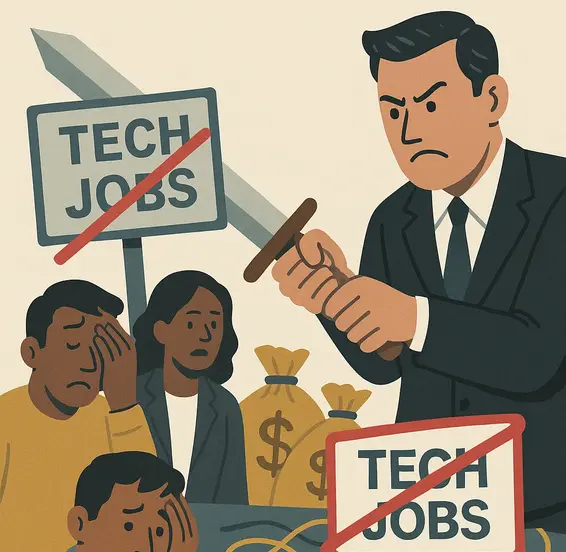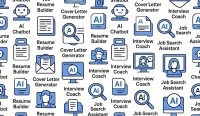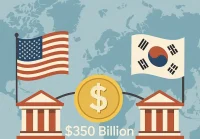Since 2019, tech companies have cut more than 800,000 jobs worldwide while profits grew by an average of 40%. This simultaneous downsizing and profit growth reveals a fundamental shift in how technology companies operate—prioritizing shareholder returns over employment and innovation. The wage gap between CEOs and workers has become extreme, with typical American CEOs earning 344 times what typical workers make in 2022, compared to 21 times in 1965.
In 2020, the top 350 CEOs in the US made over $24 million on average. At an average salary, a worker would need to work over 281 years to earn what these CEOs made in one year. This CEO compensation escalation has accelerated alongside mass tech layoffs, creating a system where the top executives profit from efficiency campaigns that eliminate jobs.
The BlackBerry Example
BlackBerry exemplifies how corporate greed disguised as efficiency can destroy companies. During the early 2000s, BlackBerry dominated the smartphone market with over 40% US market share by 2010. The company was synonymous with innovation and expansion. However, instead of reinvesting profits into research, development, and innovation, management prioritized reducing operating costs and increasing shareholder value.
Starting in 2011, BlackBerry initiated massive layoffs under the pretext of adjusting structure to maintain profitability, cutting nearly 5,000 jobs in a single year—40% of its global workforce. These measures were presented as efficiency plans, but in practice they weakened the company’s ability to innovate. With fewer engineers and downsized teams, BlackBerry lost ground to Apple and Google, which were investing billions in research, software, and user experience simultaneously.
Between 2012 and 2013, BlackBerry’s sales dropped by more than 50%, and market share fell to less than 1%. As losses accumulated, the company continued its cycle of layoffs and plant closures, seeking to satisfy investors instead of rebuilding technological leadership. In 2016, BlackBerry laid off another 200 employees and announced it would stop manufacturing phones altogether—a prime example of how corporate greed disguised as optimization can destroy a brand that once represented technological excellence.
The End of Tech Perks
The lavish perks that characterized the tech industry for decades are now being questioned as companies reveal their true priorities. Working for tech companies was once considered a dream due to generous benefits, but mass layoffs over the past three years have proven companies never had real loyalty toward workers. Those benefits were necessary more than generous gestures—tools to attract and retain talent when competition was fierce.
Google exemplified this shift. For years, Google was famous for campuses filled with perks including free gourmet meals, gyms, massages, and private employee shuttles. However, after announcing more than 12,000 layoffs in 2023—roughly 6% of its global workforce—the company began cutting back many hallmark benefits. Free lunches were eliminated for certain shifts, cafeteria numbers reduced, travel expenses restricted, and internal celebrations paused, all under operational efficiency pretexts.
This resulted in Google reporting an increase of about $86 billion in annual profits. This change revealed that perks presented for years as part of innovative, human corporate culture were recruitment and retention strategies. Rather than reflecting genuine commitment, these perks primarily served to attract and keep employees. Once labor markets contracted and companies no longer had to fiercely compete for engineers, those perks became expendable.
The End of Tech Perks
The era of free lunches and lavish campuses is fading. As tech companies prioritize profits over perks, the illusion of corporate loyalty gives way to operational efficiency. The lesson is clear — true stability comes from skills, not benefits. Build expertise that outlasts market cycles.
Explore Tech & Business Strategy Roles →AI as the Perfect Excuse
The rise of artificial intelligence provided the perfect excuse for companies to reduce workforces without tarnishing their image with investors. Paycom terminated what they called back office roles and replaced jobs with AI, sending texts to more than 500 employees not to report to work. Energy costs, office rents, and infrastructure maintenance expenses are barely reduced through automation, while staff cuts generate immediate and quantifiable reductions in payroll, benefits, and compensation.
Meta Platforms exemplifies this pattern. Between 2022 and 2023, Meta eliminated around 14,000 jobs, more than 10% of its global workforce. The company claimed AI would improve efficiency in products and operations. But experts noted that real savings in technological infrastructure were marginal compared to money saved on salaries. The company managed to maintain and even increase net profits by more than 20% during that period, demonstrating that layoffs were more related to margin optimization than operational improvements.
Meta’s year of efficiency paid off. Measures taken helped reduce costs and headcount, and even with leaner teams and operations, the company exceeded expectations. Google followed a similar pattern in 2023, cutting approximately 6% of its workforce while reporting revenues of $37 billion, a 9% increase from the previous year. Corporate statements emphasized AI as an efficiency driver, but numbers show that workforce reductions had far more direct impact on profits than any implemented automation.
The CEO Pay Disparity
The most visible evidence of inequality lies in exorbitant CEO salaries. The wealth gap continues widening in America as CEOs get paid far more than their employees. The average CEO makes 235 times more money than the median worker, and in 2023 the average ratio across companies was 290 to one—meaning for every dollar an ordinary worker earned, the CEO made $290.
In some cases, that difference exceeded 400 times, showing that concentration of wealth at the corporate top has become extreme. Rick Smith, CEO of Axon Enterprises, received total compensation of $165 million in 2024—more than a thousand times the average salary of his employees. Amazon’s case reached even higher levels. CEO Andy Jassy received total compensation of $40 million in 2024, driven mainly by stock valuation, while the average Amazon employee earned less than $38,000 per year. Jassy made more than a thousand times a typical worker’s salary.
This inequality worsens when top executives receive record bonuses for meeting efficiency goals—a polite way of saying they managed to lay off more people and reduce labor costs. Public opinion has noticed: 87% of Americans believe this disparity is a problem, while about 70% think there should be a cap on CEO pay relative to average workers.
The Economic Impact
The impact of these decisions extends far beyond Silicon Valley offices. Every job lost in the tech sector means less consumption, fewer local taxes, and fewer job opportunities across the country. Reduced tech employment means less social mobility and lower economic dynamism throughout the economy.
What once was celebrated as a driver of global prosperity—with startups growing, programmers earning high salaries, and large corporations driving digital change—now resembles the financial world more than the innovative sector. The tech sector has become the main engine of structural inequality, using technology that once promised to free people from repetitive tasks and open growth opportunities as an argument to eliminate jobs instead.
The AI Hype Versus Reality
The media are flooded with reports of mass layoffs blamed on AI. But recent studies show that this may be nothing more than an excuse for companies to reduce workforces without damaging their image. Two major ways AI promises to change work involve shrinking the workforce and boosting productivity. On the productivity side, companies are seeing green shoots in small experiments, but for many, widescale efficiency remains elusive.
This has led to concern even among politicians who warn about possible effects that corporate greed could have on labor markets and the economy. The level of corporate greed evident now has never been seen in the country, raising questions about whether recent layoffs represent genuine AI-driven efficiency or simply opportunity to cut costs while blaming technology.
The Broken Social Contract
Technology companies have broken the social contract that attracted millions of workers to the industry. Where innovation and growth once meant expanding teams and investing in talent, current strategy focuses on margin optimization through headcount reduction. The pattern is consistent: companies grow profits while reducing payrolls, benefiting executives and shareholders while leaving workers behind.
Nvidia exemplifies current dynamics. The AI titan, largely seen as the world’s most valuable company, put out a better-than-expected earnings report with revenue soaring 56% compared to last year. Meanwhile, tech companies across the industry continue announcing layoffs attributed to AI efficiency, even as studies suggest these automation claims may be overstated.
The Path Forward
The current model isn’t sustainable. While cutting jobs and benefits maximizes short-term shareholder value, it weakens companies’ long-term capacity for innovation and growth. BlackBerry demonstrates this: prioritizing cost reduction over innovation led to market share collapse and eventual exit from the business it pioneered.
For tech workers, the dream job with perks and security has been revealed as conditional—benefits exist only while companies compete for talent. When that competition ends or AI provides cover, those benefits disappear. The sector needs fundamental restructuring to restore balance between corporate profits and employment security.
Frequently Asked Questions
Q: How many tech jobs have been cut since 2019?
A: Tech companies have cut more than 800,000 jobs worldwide since 2019, while profits grew by an average of 40%, revealing a strategy prioritizing workforce reduction over employment.
Q: What’s the CEO-to-worker pay ratio?
A: In 2022, typical American CEOs earned 344 times what typical workers made, compared to 21 times in 1965. Rick Smith of Axon made $165 million—over 1,000 times average employee pay—while Amazon’s Andy Jassy made $40 million, over 1,000 times a typical worker’s salary.
Q: Are AI layoffs really about AI efficiency?
A: Studies show AI may be an excuse for reducing workforces without damaging company images. Meta cut 14,000 jobs claiming AI efficiency but real savings came from salary reductions, not automation. Infrastructure costs barely decreased while payroll cuts had immediate profit impact.
Q: Why did Google cut employee perks?
A: After laying off 12,000 employees in 2023, Google eliminated free lunches, reduced cafeterias, restricted travel, and paused celebrations. The company reported $86 billion profit increase, revealing perks were recruitment tools rather than genuine cultural commitments to workers.
Q: How did corporate greed destroy BlackBerry?
A: Instead of reinvesting profits into innovation, BlackBerry prioritized reducing costs for shareholders, cutting 5,000 jobs in 2011. With fewer engineers, BlackBerry lost to Apple and Google, who invested billions in research. Sales dropped 50% and market share fell below 1%, leading to eventual exit from phone manufacturing.
Q: What do Americans think about CEO pay disparity?
A: 87% of Americans believe CEO-worker pay disparity is a problem, while 70% think there should be caps on CEO compensation relative to average workers, showing widespread recognition that current inequality levels are unacceptable.




